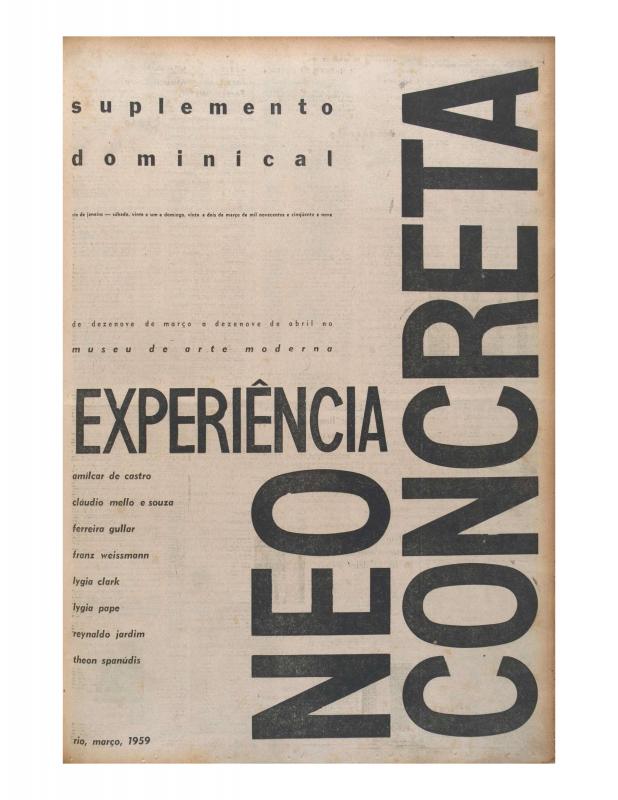Franz Weissmann was one of the first Brazilian artists to produce sculptures in a constructive style. In the early 1950s he was a member of the Grupo Frente (led by Ivan Serpa), a group of artists in Rio de Janeiro who were exploring Geometric Abstraction. In 1956 (in São Paulo) and 1957 (in Rio de Janeiro) he took part in the I Exposição Nacional de Arte Concreta. After the group broke with Concrete art, Weissmann was one of the signatories to the “Manifesto Neoconcreto” in 1959 [see ICAA digital archive, doc. no. 1110328].
This essay appeared in "Artes Plásticas" [Visual Arts], the column by poet and art critic Ferreira Gullar in the Suplemento Dominical do Jornal do Brasil, a regular space where information about Constructive art theory and works was published. In his essay, Gullar discusses Weissmann’s interest in empty space, a feature of his work that would become more pronounced as time went by. According to Gullar, this value, which contributes to the (empirical and intuitive) organic nature of the sculptor’s work, contradicted the overly theoretical and rationalist approach adopted by Concrete artists.
For more on the “I Exposição Nacional de Arte Concreta: 2 - O grupo do Rio,” see doc. no. 1090217. This essay is one of the series written about that historic exhibition by the poet, playwright, essayist, and art critic [José Ribamar] Ferreira Gullar (b. 1930), who subsequently became the leader of the “Neo-Concrete” group. It is an important document, mainly because it reflects the opinion of Gullar about the work of noted artists who were part of the Brazilian Constructivist art movement.
In a rather forced attempt, Ferreira Gullar tries to identify Weissmann’s sculptural and extremely geometric objects as an experimental step that went beyond the Constructive tradition and Max Bill’s Concrete legacy. He also, however, wrote a very famous essay in 1960 in which he outlined a theoretical introduction to the concept of the “non-object,” a category of work that does not fit within the traditional parameters of either painting or sculpture. See “Teoria do não-objeto,” doc. no. 1091374.



